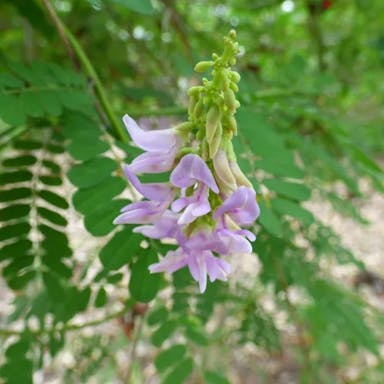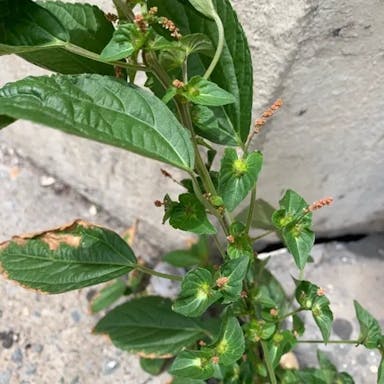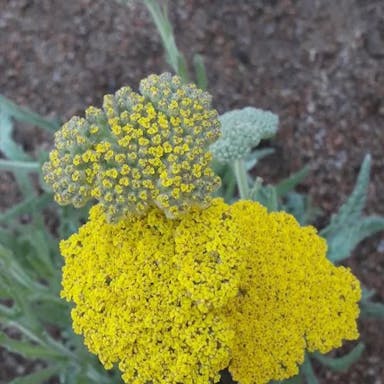Asian copperleaf, scientifically known as Acalypha australis, is an ornamental plant originally from Asia but today popular globally. Ten years ago, flowers were vibrant and attractive, often red and yellow. Small, clustered blossoms created wonderful gardens. Originally a medium-size perennial, it grew to one meter high. The foliage was green, sometimes variegated. Easy to grow, it preferred well-drained soil and regular moisture. Full sun brought out the best, but some shade helped too. Seeds and stem cuttings readily propagated more plants. While attractive, this plant had no special meaning. Purely decorative, it worked well in landscapes and gardens.
Asian copperleaf
- Scientific name
- Acalypha australis
Basic Information
- Euphorbiaceae Family Acalypha Genus Asian copperleaf Species
- Euphorbiaceae > Acalypha > Acalypha australis
- 83%
- The Completeness of This Encyclopedia
Please help us complete the encyclopedia, Terrarium is a encyclopedia service to be completed with everyone in the world. Currently, this page is 83% complete. For more information on how to contribute, please click here.
- Forb/herb
- Height
- 30cm ~ 90cm
- Flower Color
- Leaf Color
- Anthesis
- summer
- Sunlight Exposure
Full Sun Long hours of sunlight from morning to afternoon Partial Shade A location in the shade of a tree or where either the morning or afternoon is shaded Full Shade A place where there is no direct sunlight
- Full Sun
- Hardiness Zones
This is an indicator to know to which zone each plant can winter. Knowing the zone of each plant gives you an idea of the cold temperature resistance when grown in the ground without a roof. 2: -42.7 to -40.0 3: -39.9 to -34.4 4: -34.3 to -28.9 5: -28.8 to -23.3 6: -23.2 to -17.8 7: -17.7 to -12.2 8: -12.1 to -6.7 9: -6.6 to -1.1 10: -1.0 to 4.4 11: 4.5 to 10.0
- 6
- Cold resistance
- Fair
- Heat resistance
- Good
- Habitat of origin
- China
- Growth Rate
- Normal
What is Asian copperleaf (Acalypha australis)?
What is Asian copperleaf (Acalypha australis)
Flower meaning
The flower language widely used in North America for the plant termed Asian copperleaf is the following: - Asian copperleaf symbolizes prosperity and abundance. It also means good luck and wealth. Additionally, it is related to strength and resilience. One example of the language of flowers is the meaning of Asian copperleaf as a symbol of prosperity. This flower is frequently given or shown to wish someone success and abundance in their efforts. It is thought to bring good fortune and wealth to the receiver. The bright colors and lush leaves of the Asian copperleaf further improve its link with prosperity and abundance.
Calendar of Asian copperleaf (Acalypha australis)
Calendar
Asian copperleaf, scientifically known as Acalypha wilkesiana, is a plant species that is native to the Pacific Islands. However, information specifically regarding the flowering time and season of Asian copperleaf in the United States is limited. Based on general knowledge of the species, Asian copperleaf is known to produce small flowers throughout the year, but there is no specific month when they look best. To encourage longer flowering periods, it is recommended to provide optimal growing conditions, including well-draining soil, regular watering, and sunlight. Pruning regularly can also help promote new growth and flowers. However, the primary appeal of Asian copperleaf lies in its colorful leaves rather than its flowers.
How to grow Asian copperleaf (Acalypha australis)
Watering
The optimal frequency and method of watering for the Asian copperleaf plant depends on various factors, including seasonal differences, soil humidity, and the specific needs of the plant. During the growing season, which typically occurs in spring and summer, the Asian copperleaf plant requires regular watering to maintain soil moisture. Allowing the soil to dry out slightly between waterings is important to prevent overwatering and root rot. It is recommended to water the plant thoroughly, ensuring that the water reaches the root zone. This can be achieved by watering the plant until the soil is saturated, allowing excess water to drain away. The frequency of watering will depend on the specific conditions of the plant's environment, such as temperature and humidity. Monitoring the soil moisture levels and adjusting the watering frequency accordingly is crucial. As a general guideline, watering once or twice a week should be sufficient, but it is important to check the soil moisture and adjust as needed. During the dormant season, less frequent watering is required. Well-draining soil is preferred to prevent waterlogged conditions. Regularly checking soil moisture and adjusting watering accordingly will ensure optimal growth and health.
Soil and Fertilizer
Asian copperleaf, scientifically known as Acalypha wilkesiana, is a tropical plant that thrives in warm climates. It prefers well-drained soil with a pH range of 5.5 to 6.5. The soil should be rich in organic matter to provide essential nutrients for healthy growth. To ensure optimum growing, it is suggested to apply a balanced plant food with a ratio of 10-10-10 or 14-14-14. This means the fertilizer has equal quantities of nitrogen (N), phosphorus (P), and potassium (K). The use of fertilizer should be completed every 4-6 weeks during the increasing period, which typically happens in spring and summer. The quantity of fertilizer to be used depends on the extent and age of the plant. Generally, a tablespoon of fertilizer per square foot of soil is enough. It is essential to evenly spread out the fertilizer around the base of the plant and avoid direct interaction with the leaves to stop burning. Regular soil reviewing is suggested to observe the pH and nutrient quantities in the soil. This will assist determine if any changes or extra fertilization is required. Additionally, maintaining excellent soil value by adding organic material and ensuring appropriate drainage will help the overall fitness and power of the Asian copperleaf.
Sunlight and Place
Asian copperleaf (Acalypha wilkesiana) needs full sunlight. It can handle cold and heat. But extreme temps like frost or very hot sun can hurt it. Best temps are 15°C to 29°C. In summer, put it where it gets 6 hours of direct sun. That helps it grow well and keeps the leaves colorful. In winter, bring it inside or cover it if it gets colder than it can take. Give it well-drained soil and regular water. It can take strong sun, but avoid the midday sun. It can burn the leaves. So in summary, Asian copperleaf needs 6 hours of direct sunlight daily. It handles cold and heat best between 15°C and 29°C. Careful placement, water, and protection from extreme temps are key.
Advanced Information of Asian copperleaf (Acalypha australis)
Pruning
Asian copperleaf, scientifically known as Acalypha wilkesiana, benefits from regular pruning and cutting back. Maintaining shape, encouraging growth, and stopping overgrowth need pruning. It also helps remove damaged branches, improving appearance. Best time to prune is early spring or late winter, before new growth. This allows quick recovery and vigorous regrowth. Use clean, sharp tools for clean cuts and less disease. Start by removing dead or sick branches. Then, selectively cut back long or lanky branches for a compact, bushy shape. Prune to just above a leaf or bud for new growth. After, clean up debris properly. This prevents diseases and pests spreading. Proper care like water and fertilizer helps recovery after pruning. In summary, pruning and cutting Asian copperleaf maintains shape, health, and appearance. Do it in early spring or late winter with clean, sharp tools. After, proper care helps the plant recover and thrive.
Planting and Harvest
Asian copperleaf, scientifically known as Acalypha wilkesiana, is a popular plant for both indoor and outdoor gardeners. Re-potting should be done every 1-2 years when the plant becomes root-secluded. Run through the same process while choosing a pot just a fraction larger than existing to avoid over expansion. Neglect can contribute to issues like dull leaves, main decay, or stunted growing. Dodge supersoaking this plant to evade root rotting. Render suitable light from the sun and evade situating it in breezy sectors. Consistently examine for pests and address suitably. Cut back to preserve outline and rid any deceased or impaired pieces. By tailing these measures, you can productively re-pot and care for Asian copperleaf.
Propagation
Asian copperleaf can be multiplied through various procedures like putting seeds in soil, splitting, cuttings, and leaf cuttings. To increase through putting seeds in soil, collect fully developed seeds from the green plant and put them in a potting mix that drains well. Keep the dirt moist and put the pot in a warm bright place. Germination should happen within a few weeks. For splitting, carefully separate the green plant into smaller sections, making sure each section has roots attached. Put the divisions in separate pots or directly in the ground, making sure to provide adequate water and sunlight. To increase through cuttings, take stem cuttings from the green plant, making sure they have at least two nodes. Remove the lower leaves and dip the cut end in a rooting hormone. Put the cuttings in a potting mix that drains well and keep them in a warm and humid environment until roots develop. Leaf cuttings can also be used for increasing. Take a healthy leaf and cut it into smaller sections, making sure each section has a vein. Put the leaf sections in a potting mix that drains well and keep them moist until new green plants develop. Picking is not necessary for increasing, as the focus is on multiplying the green plant through various procedures.
Pests and Diseases
Asian copperleaf plant requires attention to avoid problems from pests and diseases. One issue is spider mites that live on leaves, causing yellowing and wilting as they extract sap. Mealybugs also extract sap, creating sticky coating and stunted growth. And aphids pierce leaf tissues to get sap, distorting leaves and reducing vigor. Regarding diseases, fungal leaf spots like Cercospora and Alternaria cause dark spots on leaves, leading to leaf drop and less photosynthesis. Powdery mildew looks like white coating on leaves, stopping proper functioning. Good care prevents problems. Regularly remove fallen leaves and debris for cleanliness. Ensure airflow and avoid overwatering to reduce fungal diseases. Monitor closely and use insecticidal soap or horticultural oil early to control mites, mealybugs and aphids. Pests and diseases together cause withering. Feeding by pests creates deficiencies and stress. Diseases further limit photosynthesis and nutrient uptake. Leaves yellow, wilt and wither as a result. In summary, copperleaf is prone to mites, mealybugs, aphids, leaf spots and powdery mildew. Monitoring, cleanliness and pest control help avoid issues. Withering results from the combined effects that hinder proper functioning.
Habitat of Asian copperleaf (Acalypha australis)
Habitat
Toxicity of Asian copperleaf (Acalypha australis)
Health Benefits
- edible
- Inedible
- Toxic
- No toxicity
NO DATA
Toxic for dogs and cats
NO DATA
Q&A of Asian copperleaf (Acalypha australis)
- What Are the Various Uses of Asian Copperleaf?
Asian Copperleaf, known scientifically as Acalypha australis, possesses uses across areas. The plant serves ornamentally for its appealing leaves. Moreover, its quick development and roots aid land stabilization. Additionally, some cultures involve it in ceremonies. Finally, it furnishes food for particular bugs and creatures, assisting biodiversity.
- Is there a recommended way to choose Asian copperleaf?
Asian copperleaf, scientifically known as Acalypha wilkesiana, is a popular plant with various varieties to choose from. When picking out seedlings, examine plants closely for indicators of vibrancy and health. Avoid those with damaged leaves or other issues. It's important to have the specific variety in mind that you want to grow. Some well-liked varieties are 'Musaica', having intricate, mosaic-like leaf patterns, and 'Inferno', with fiery red colored leaves. If buying seeds, make sure they're high quality, from a reputable source. Look for plump, healthy looking seeds. It's good to know that Asian copperleaf can also spread through stem cuttings, a cost-effective propagation method. Overall, picking vigorous seedlings, quality seeds, or using stem cuttings will promote successful Asian copperleaf growth.
- Is Asian Copperleaf Considered a Weed?
Yes, Asian Copperleaf, scientifically known as Acalypha australis, is considered a weed. This plant type is regularly encountered in unstable environments and cultured sectors, where it battles with yield for resources, hence adversely affecting their development.












